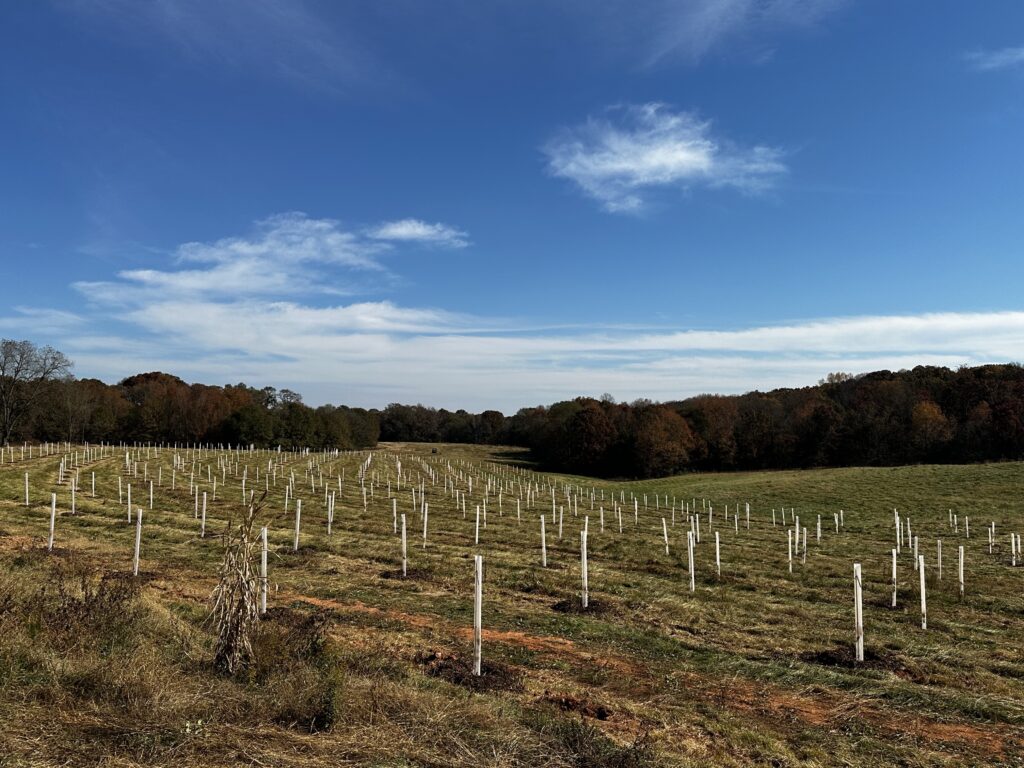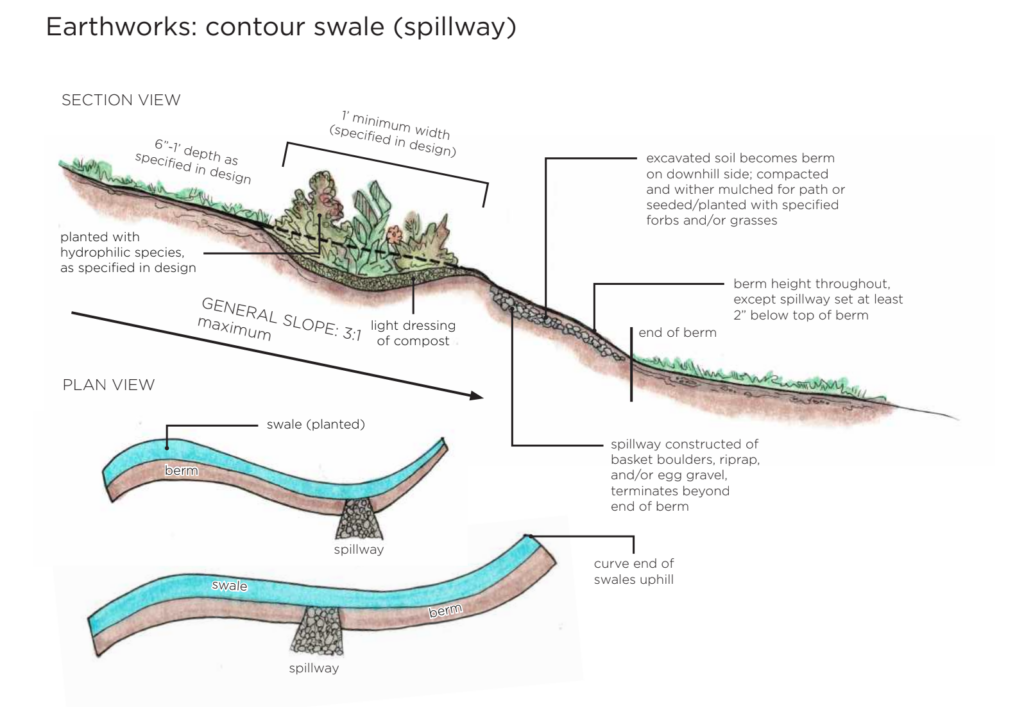
Orchard of chestnut saplings with contour swales
In the realm of sustainable land management, a permaculture approach seeks to harmonize human activities with natural ecosystems. At its core, permaculture emphasizes principles such as observation, diversity, and integration to create resilient and productive landscapes. One crucial aspect of permaculture design is water management, and contouring the landscape emerges as a fundamental technique with multifaceted benefits.
Contouring involves shaping the land to follow its natural contours and creating swales, berms, and rain gardens along the contour lines. This method effectively slows down water runoff, encourages infiltration, and reduces erosion, thus enhancing water retention and distribution across the landscape. By implementing contouring techniques through a permaculture lens, we can achieve both environmental and practical positive outcomes.

Illustration by Kate Freeman, Designer
Mimicking Nature’s Patterns
Permaculture teaches us to observe and learn from nature’s patterns. In natural landscapes, water flows in meandering paths, following the contours of the land. By contouring the landscape, we mimic these natural patterns, creating systems that work with, rather than against, the forces of nature. This approach conserves water and fosters biodiversity, soil health, and ecosystem resilience.
Enhancing Soil Fertility
Healthy soil is the foundation of productive landscapes. Contouring helps prevent soil erosion by slowing down water runoff, allowing sediments and organic matter to settle. Water infiltrates the soil, nourishes plant roots, and promotes microbial activity. Over time, this process enhances soil fertility and structure, supporting robust plant growth and reducing the need for external inputs like fertilizers.
Regulating Water Flow
Managing water flow is critical for landscape stability and ecosystem health in regions prone to heavy rainfall or drought. Contouring enables us to capture rainwater where it falls, storing it in the soil or retention ponds for later use. By regulating water flow, we can mitigate the impacts of floods and droughts, ensuring a more reliable water supply for plants, animals, and human communities.
Creating Microclimates
Contouring allows us to design microclimates within the landscape, leveraging natural features like slopes, aspect, and vegetation to optimize growing conditions. We can create sheltered areas that retain moisture, moderate temperatures, and support diverse habitats by strategically placing plants, ponds, and structures. These microclimates enable us to cultivate a wide range of crops, including those suited to specific environmental niches.
Case Study
In a recent project, we leaned heavily into contouring in order to manage water as a resource when we helped a couple begin their dreams of starting a regenerative orchard. We helped plant 300 bare-root chestnut saplings and designed and installed swales along the contour of the orchard.
Our team designed and installed swales along the contour of the landscape – essentially digging small trenches that follow the contour of the land so every point of the swale is at the same topographic point, making it completely level with itself. As nutrients and water flow down the slope of this orchard, rather than being channelized because of the natural changes and topography, the nutrients, and water are led into the swales and then spread out evenly across the space so that anything planted would benefit equally from the distribution of those resources. These swales also help to slow water as it dances along the slope and seeps it into the ground — helping infiltrate that water and sink it into the porous soil.
The clients now have the start of a sustainable, regenerative orchard that will irrigate itself — bringing their family abundance and harvest for generations to come.
Contouring the landscape for water management embodies the essence of permaculture—a holistic approach that integrates ecological principles with human needs and aspirations. By working with nature’s patterns and processes, we can create productive, beautiful, but also regenerative and resilient landscapes. Through careful observation, thoughtful design, and collaborative action, we can contour the land to nourish life in all its forms, now and sustainably into the future.